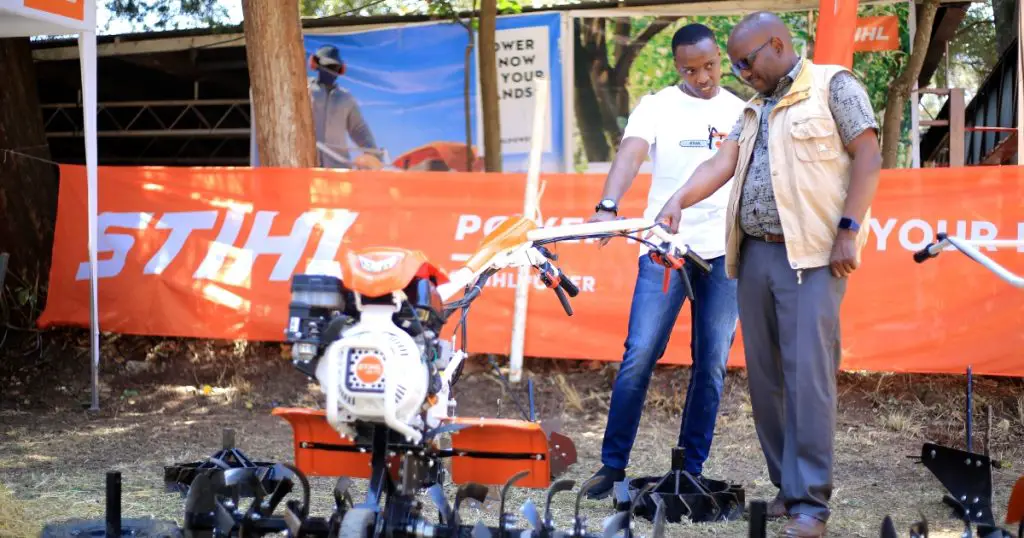- A STIHL East Africa report has now shown that farmers using power tillers can significantly reduce labour costs and increase the productivity of their farms
- The report shows power tillers can reduce labour costs by 60 per cent and increase farm productivity by 50 per cent
- It adds that a power tiller is the best choice for small and marginal farmers. It replaces animal power more effectively and helps in raising the demand for human labour
A new report has now shown that farmers using power tillers can significantly reduce labour costs and increase the productivity of their farms.
The report by STIHL East Africa shows power tillers can reduce labour costs by 60 per cent and increase farm productivity by 50 per cent.
It adds that a power tiller is the best choice for small and marginal farmers. It replaces animal power more effectively and helps in raising the demand for human labour.
Power tillers can perform the operations of different farm implements like rotavators, furrower, ridgers, trailers, potato harvesters, and disc plough discs.
“One of the most important functions of the power tiller is that it prepares an ideal seedbed for the crop to be planted, turns the soil before planting, and weeding on crop plantations. By controlling weeds, it helps in the proper growth of the crops,” the report indicates.
A power tiller is a two-wheeled agricultural implement fitted with rotary tines which helps in preparing the soil for; sowing seeds, planting seeds and adding and spraying fertilisers, herbicides, and water. Another unique feature about the tiller is that it has a power take-off (PTO), offering a drive source capable of powering other farm equipment such as water pump, chaff cutter, hammer mill, etc
The report was released on the sidelines of the Nairobi Agricultural Show, where STIHL East Africa launched a new range of agricultural products targeting over 60 000 East African smallholder farmers.
The products are designed to enable smallholder farmers to adopt mechanisation in their farms in a bid to increase their productivity and income. The range of products available in the East African market include tillers, water pumps, brush cutters, portable sprayers, cultivators, and earth augers, made especially for East African smallholder farmers.
STIHL East Africa Regional Relationship Manager Domitila Kavesa confirms the new Stihl power tools will increase the level of agriculture mechanisation in the East African region for preparing the land and the subsequent planting and harvesting.
“We have brought to the market agricultural machinery that can be used by one – to two-acre farmers, which is the broader base of agricultural producers in Africa to date. The tools will have two major impacts on agricultural production: cost savings and improvements in quality and efficiency,” she added.
East Africa is dominated by smallholder production of between 0.2 and 3 hectares, which accounts for 78 per cent of total agricultural and 70 per cent of commercial production. Agricultural GDP is driven by horticulture and cash crops, but productivity is low, particularly for cereals.
As the report indicates, the level of mechanisation has a significant positive impact on the cost, output value, income and return rate of all types of crops. For every 1 per cent increase in the level of mechanisation, the yields of all crops, grain crops and cash crops increase by 1.2151, 1.5941 and 0.4351 per cent, respectively.
“Our tools can perform the functions of levelling, land preparation, deep turning and deep scarification, which can improve land quality better than the traditional manual and livestock operation methods, especially in the transformation of medium- and low-yield fields.”
“Agricultural machinery can increase the degree of multiple cropping of cultivated land to provide the potential for multiple crop cycles per year, thus improving production capacity and land output rates. Mechanical irrigation and drainage, dry farming machinery and mechanical spraying can effectively mitigate risks such as drought, floods, weeds, and insect pests,” she explained.
Other solutions include selling our products to a wide range of dealer networks, bringing them closer to the end-user while ensuring price control, offering dealers training on product information and application, and enabling them to transfer this knowledge to the end-user at the point of sale. This can see farmers’ production and profitability more than double in the first year.
